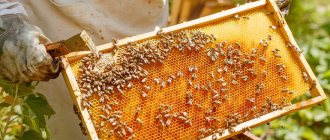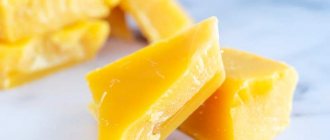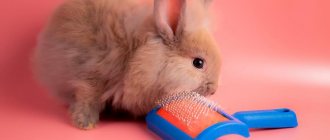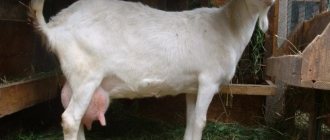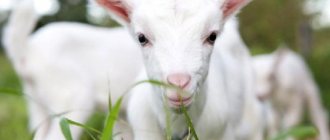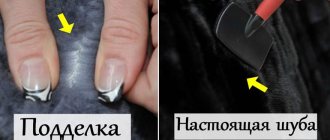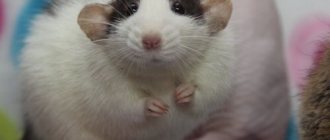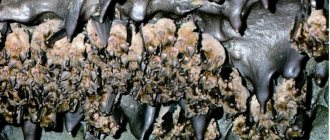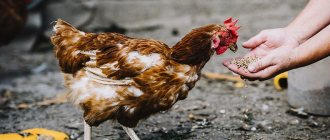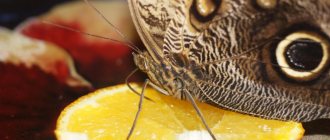At all times, fur products were worth their weight in gold. A fur coat not only protected its owner from bad weather, but also testified to financial well-being and importance in society. Karakul gained popularity at the end of the 19th century and is still found in the collections of leading clothing designers. This fur is represented by many types, the most famous of which are astrakhan fur and broadtail.
What type of fabric is this?
Karakul is the skin of lambs of Karakul sheep, taken at different times from the moment of birth and dressed in a special way.
The birthplace of the material is Uzbekistan. The name of the fur itself translates as “Black Lake”, in honor of the Uzbek city.
How to get karakul
In response to what karakul is, it must be pointed out that it is taken from astrakhan lambs, and astrakhan smushka with whiting and strap is taken from sheep with coarse wool. In terms of wear resistance, it is similar to sheepskin. Its natural color is black and gray. Sometimes it is painted white. Its value lies in the unusual pattern formed from wool curls. Each skin is decorated with intricate lines and swirls.
You might be interested in: Properties of alpaca as wool fabric: appearance of the material
White lamb
Origin story
Karakul sheep are unpretentious and easily adapt to the desert climate, which is why the breed has become popular for breeding in Central Asia. Karakul was the first type of fur that humans began to manufacture and is the most ancient. The first mention of it appears in the 8th century, and the trade in sheep skins was described by geographers in the 10th century.
Karakul was admired by famous travelers Marco Polo and Afanasy Nikitin. The fur was widely known and sold in Europe. In the 17th century, the material was brought to Russia.
When Uzbekistan became part of the Soviet Union, 400 thousand sheep were transported to Afghanistan, and 70 thousand were driven to Iran. This marked the beginning of the emergence of different breeds of astrakhan fur.
The production of astrakhan fur began to improve in the 70-80s of the 20th century, but a crisis broke out, and then the collapse of the USSR. The breeders of Central Asia, left without control, sold all available skins and exterminated breeding sheep, without thinking about the continuation of the breed. Supplies dwindled and prices began to fall. Karakul has lost popularity.
At the beginning of the 21st century, couturier Ralph Lauren became interested in this fur and presented it in his clothing collection. Other fashion designers followed him by incorporating karakul into their new models. Thanks to this, the material is experiencing a second wave of popularity.
Why you should wear astrakhan clothes
There is constant debate about whether it is worth wearing astrakhan fur. Many of our compatriots still perceive this fur as something “soviet”. They would be quite surprised to learn how in demand karakul is in Western markets. The nuance is that an ignorant person will not always distinguish an artificial scribble from a natural one.
Meanwhile, natural sheepskin fur is unique. If you purchase a fur coat, coat, or jacket made from real astrakhan fur, rest assured that they will serve you for years, and you can rely on their quality. It is especially worth noting the astrakhan hats, which are uniform hats for senior officers, which already speaks of the prestige and functionality of fur. If you decide to choose broadtail, then it is better to create a jacket or demi-season coat from it. Sewing is entrusted to a professional - on astrakhan fur any seam is extremely noticeable.
Karakul is good because it ideally hides figure flaws. Even in a simple fur coat you will look slim and feminine. What can we say about modern models, which are not only created in original styles, but also have fur trim. By the way, astrakhan clothing for men, including jackets and even blazers, look no less stylish.
Types of fabric
Main types of karakul:
Astragan
Fur of the highest quality. It is more wear-resistant and heat-saving. Easy to wear and care for thanks to the short-cropped fur.
Yahobab
Skins of lambs, not older than 1 month. Matte surface, slightly silky. The curls are loose and elastic and have different shapes.
Uzbek
Often called the “Moscow jacket”. Dense, tube-shaped curls are arranged in waves.
Afghan astragan
The largest and heaviest skins. Thanks to its thickness, it is most wear-resistant. It has a wavy curl pattern and high shine.
South African
Better known as "Svakara". Easy to care for. Ribbed pattern due to parallel ridges.
Types of fur raw materials obtained from the Karakul breed
How is karakul made and what are the types of karakul? The following types of fur raw materials are known, which can be obtained from unborn or newborn lambs:
- Smushka is the skin from a Smushka sheep from four-day-old lambs. It is distinguished by its softness, matte and shiny structure, loose and braided curls.
- Moire is a canvas with a moire pattern and low hairline.
- Klyam is a canvas that has a low raised cover with manes and a moiré pattern.
- Merlushka is a soft, coarse wool, glassy-shiny and matte, on which curls of various shapes are formed.
- Webbing is a cover consisting of ring-shaped curls.
- Treasok and sak-sak - a cover consisting of ring-shaped and corkscrew-shaped curls. Has a silky texture.
- Golyak - skins with barely visible wool from four-month abortions and embryos of sheep.
- Kurakulcha - skins of four-month-old embryos.
- Yahobab - skins of one-month-old lambs that were obtained during forced slaughter.
- Treasok is the wool of six-month-old lambs.
Attention ! It is also obtained from the Karakul breed of sheepskin - the skins of adult animals. It is often dry and friable.
Golyak
Pros and cons of fabric
Pros:
- Unique pattern - each item is individual;
- Plasticity of the material - you can gather the fabric into folds and easily model the shape of the product;
- The fineness of the fur - the fur coat does not make you look fat or spoil your figure;
- Reasonable price for most breeds.
Minuses:
- Due to its thinness, it will not warm you in severe frosts;
- You need to approach the breed with care - some species can last no more than 3-4 seasons.
Karakul and broadtail - what's the difference?
It is known that karakul is made from the skins of newly born lambs of the karakul breed. For this process, individuals 1–3 days old are used. After all, the older the lamb, the coarser the wool. Each skin surprises with its special unique pattern, extraordinary lightness and silkiness.
However, not every person who is not involved in fur production issues will correctly answer the question: broadtail - whose fur?
Karakulcha is the same skins of lambs, but not yet born. It is not difficult to distinguish it from astrakhan fur: the curls are not yet formed, the hairs are short and tightly adjacent to each other, the skin has a beautiful moire pattern.
These two types of fur differ not only in origin, but also in consumer characteristics.
| Characteristics | Astrakhan | Broadtail |
| Appearance | The fur is dense, the curls are clear and fully formed. There is fur of silver, golden, black color. The rarest colors are brown and white. The skin is silky and very soft to the touch. | Unique moire pattern, not fully formed curl. The skins are small in size. Color black, gold or silver. |
| Thermal conductivity | Thanks to the dense core, it retains heat well and is not afraid of moisture. Excellent protection from the cold if the frost is not lower than -10°C. | The density of broadtail is much lower, so products made from this material are not suitable for wearing in winter. |
| Wear resistance | Durable material, excellently withstands use for 10 seasons. Fur is not wear-resistant. | Clothing made from astrakhan fur lasts no more than three years. |
| Usage | Coats and jackets, collars, men's and women's hats are made from astrakhan fur. | It is used for light coats and jackets, but most often as a trim for dresses, coats, and suits. Usually these are exclusive products intended for publication. |
What standards are used in production? What do they take into account?
To comply with the standards described in GOST 2865-68, skins must:
- Be removed in one layer, from head to tail and toes.
- Do not have holes, tears, or snatches from the edges.
- Be thoroughly cleaned of any remaining meat, tendons and fat, and free of ear cartilage, legs and tail;
GOST 8748-70 describes the same thing, and additionally mentions canning conditions:
- The skins must be preserved using a pickled or dry-salted method.
- When dry-salted preservation, they must be thoroughly degreased, cleaned of dirt and blood, the hair roots must not be damaged, they must be straightened evenly.
- When fermented, they must be fermented with bread kvass, have white flesh, and be evenly spread. The fur must be cleaned of all types of contaminants.
Rules for caring for things made from astrakhan fur
The durability and respectable appearance of the product over the years depends on proper care and compliance with storage conditions in the summer. If your fur coat is significantly dirty, it is better to use the services of a specialized dry cleaner. However, it is quite possible to get rid of small stains and dust at home.
Here are some recommendations for caring for an astrakhan fur coat or coat:
- The surface of astrakhan or broadtail can be wiped with a sponge dipped in a soap solution.
- To remove dust, the product is laid out on a slightly damp sheet with the wrong side up and knocked out with rolled paper or a special plastic beater.
- By wiping the surface of the fur with a cotton pad soaked in a 5% vinegar solution, you can restore the original shine and silkiness.
- Contaminated areas are treated with starch. The greasy stain is covered with powder, lightly rubbed into the pile, and then cleaned with a clothes brush.
- To avoid creases and bald spots, it is not recommended to carry a bag on your shoulder or leave a brooch pinned in one place for a long time.
Under no circumstances should you wash, iron or comb the astrakhan fur. This will inevitably lead to damage to the product.
What purposes can this fabric be used for?
Fur coats are made from astrakhan fur, but in addition to them, vests and short fur coats are made from fur. As well as shawls, hats, gloves and fur collars.
Questions and answers
How to revive an astrakhan fur coat after a walk in wet snow?
If a fur coat made of astrakhan fur or astrakhan fur gets wet, it must be shaken off, ridding the fur of moisture and snow, and then hung on hangers to dry. Do not dry fur items near heating devices or under a hairdryer. Sudden temperature changes can lead to deformation and damage to clothing.
How to store products made from astrakhan fur or astrakhan fur?
As soon as the winter season is over, the astrakhan fur coat or coat is put away in the closet. The product is hung on wide soft hangers, and a fabric cover is put on top. A continuous supply of fresh air is very important for fur, so the fur coat should hang freely. In addition, care must be taken to protect against moths.
Distinctive features
Karakul is the skin of a newborn lamb. An important condition is the age of the animal; it should not be more than three days old. This period is characterized by special thickness, elasticity and silkiness of the hair. Curls are formed on the skin, differing in shape and size; they can be rolled, bean-shaped, etc.
The skin of a premature lamb is called broadtail. This fur is distinguished by its thinness, it stretches well, and has short, thick fur. The skin is shiny, has a moiré pattern, the curls are not clearly formed, and the tactile sensation is similar to velvet.
Despite the weak strength of broadtail, it is considered quite valuable, beautiful and expensive.
What is the price?
Since swakara skins, as material for sewing fur coats, come to the market in very, very limited quantities, the price of the finished product is very high. The main suppliers providing ready-made fur products are Spain, Italy and Greece.
The price range, on average, ranges from 180 to 450 thousand rubles. A Spanish model of a svakara fur coat with a trapezoidal silhouette can be purchased for 190 - 250 thousand, and a Greek model of a classic cut - for 290 - 300 thousand rubles.
[Show slideshow]
Disadvantages of a swakara fur coat
Among such an abundance of advantages of the South African karakul, there was a fly in the ointment. The main disadvantage of this fur is its high cost.
There are few craftsmen who are ready to engage in breeding work, as well as processing such delicate fur. For this reason, the number of swakara fur coats is quite limited and distributed in meager quantities. Despite this, it still remains very popular, outpacing the sales rankings of Afghan astrakhan and broadtail.
Color
Both the broadtail and the astrakhan fur are mostly black in color. Less common are skins of brown color, various shades of gray, characterized by a smooth transition of color saturation from deeper at the base of the hair to almost white at the end. And also completely white and motley. Silver and golden shades of fur are of particular value. Astrakhan fur is distinguished by its moire pattern, resembling velvet or even silk.
Astrakhan fur
